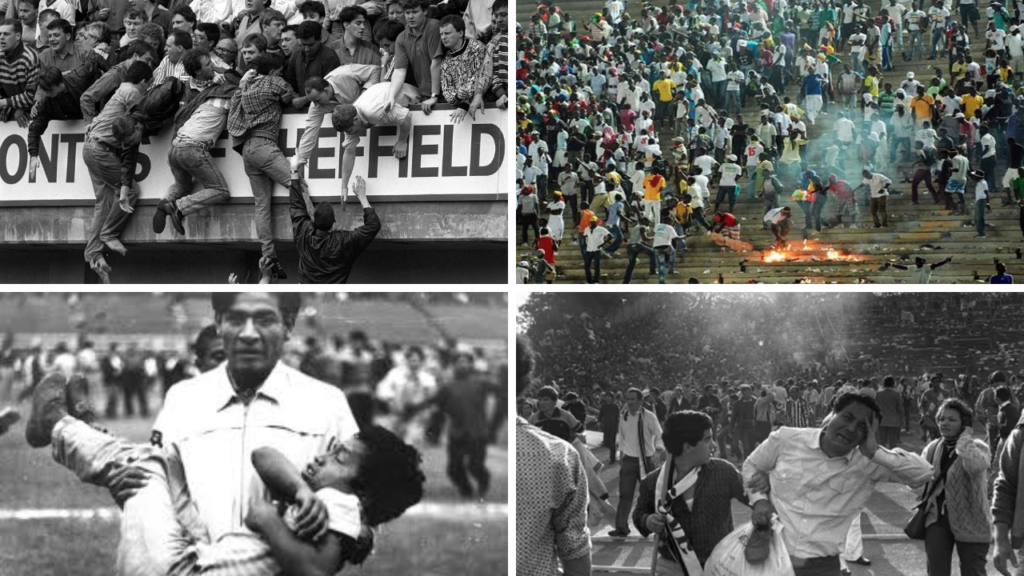
Few would associate sport with death. As its worst, sport can be an outlet for tribalism and aggression, but rarely do you associate a match with loss of life. In the case of what happened outside the Chinnaswamy Stadium in Bengaluru on June 4, the crowd hadn’t even gathered to watch a game. They were meant to be welcoming their heroes, who had won the IPL for the first time after 18 seasons of trying. Instead, 11 fans lost their lives and many more were badly injured, with the authorities unable to control the sheer numbers that had flocked towards the stadium.
In most cases, stadium disasters are caused by a combination of factors – poorly designed and aging facilities with no wide concourses or enough entry and exit gates, dangerous bottlenecks, unruly behaviour and poor civic sense, and over-zealous policing. Here, RevSportz looks at five disasters that will forever remain a stain on sport.
Hillsborough Tragedy (Sheffield, UK, 1989)
As Liverpool fans tried to get in through the Leppings Lane gates for the FA Cup semi-final against Nottingham Forest, too many were waved on to heaving terraces. The fans already in the stand were pushed towards the fence that separated it from the field of play, and most were crushed to death while somehow trying to clamber over to safety. Margaret Thatcher’s government and sections of the media tried to blame the fans, rather than inefficient policing, and the families of the 97 who died had to wait nearly three decades for official acknowledgement that it hadn’t been their fault. The Hillsborough disaster and the subsequent Taylor Report would lead to all-seater stadia in England half a decade later.
Heysel Stadium (Brussels, Belgium, 1985)
There had been bad blood between Liverpool’s supporters and Italian fans ever since some unsavoury incidents during the European Cup final in Rome in 1984. The decrepit Heysel Stadium in Brussels was woefully inadequate to host a game between two European football giants, and as a section of Liverpool fans moved threateningly towards their Italian counterparts, a supporting wall gave way. As many as 39 lost their lives.
Tear gas at Estadio Nacional (Lima, Peru, 1964)
When a Peru equaliser against Argentina was disallowed in this qualifying match for the Tokyo Olympics, a number of fans stormed the field of play in protest. When the police resorted to tear gas to disperse them, the spectators made a beeline for the exits. But those gates were closed. The resulting stampede killed over 328 people.
A Ghanaian derby tragedy (Accra, Ghana, 2001)
When Hearts of Oak scraped to a late 2-1 win over Asante Kotoko in Ghanaian football’s marquee match-up, Kotoko fans responded by ripping up seats and throwing them towards the pitch. The police responded with tear gas and plastic bullets. As a panicked crowd tried to escape, there weren’t enough exits open for them to leave. With several medical staff also having left early, as many as 126 were killed in the crush – the worst stadium disaster in Africa’s sporting history.
Kanjuruhan Stadium Tragedy (Indonesia, 2022)
Nearly 3,000 irate Arema FC fans invaded the pitch after a derby loss to Persebaya Surabaya, and started to attack players and officials. When the police resorted to tear gas, the supporters tried to escape through the exits. But poor stadium design meant many bottlenecks and 135 people lost their lives, many of them children. Only the Estadio Nacional disaster resulted in more loss of life.
Follow RevSportz For Sports Related News




